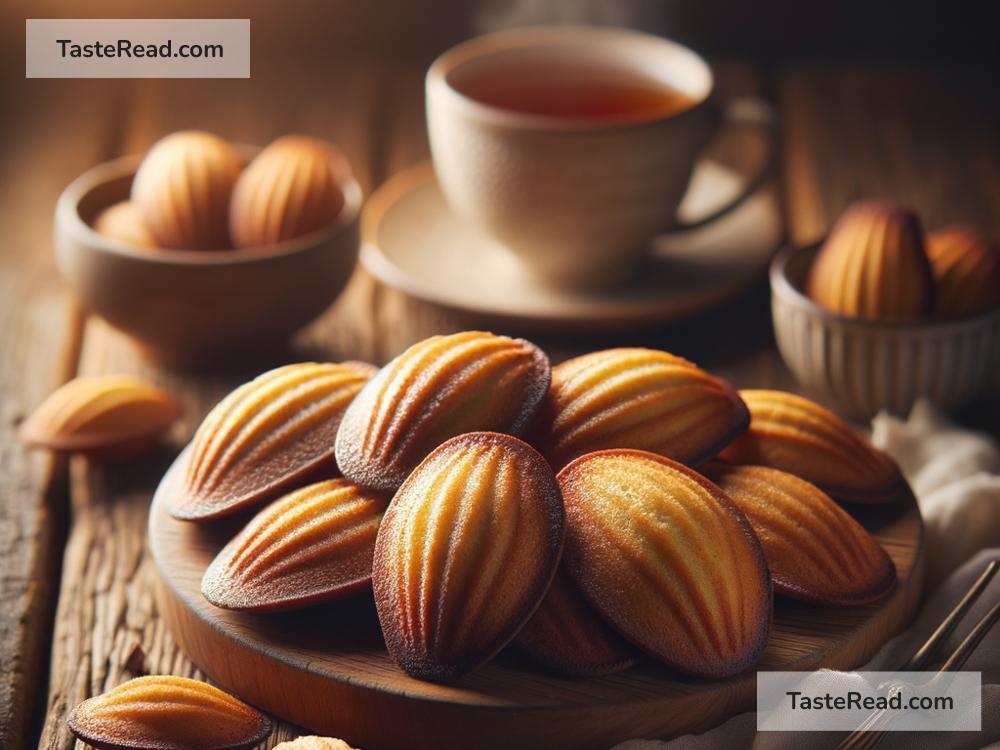The Story of the French Madeleines: A Sweet Treat With a Rich History
When you think of French pastries, you might imagine croissants, éclairs, or macarons. But there’s another delightful baked treat that holds a special place in the hearts of many—the humble madeleine. These small, shell-shaped cakes are loved for their buttery flavor, soft texture, and slight sweetness. Madeleines have become an iconic part of French baking, but their story is as rich as their taste. Let’s dive into the history and charm of French madeleines.
What Are Madeleines?
Madeleines are small sponge cakes traditionally baked in shell-shaped molds. They are soft yet slightly firm, perfect with a cup of tea or coffee. Their golden brown color and lightly crisp edges make them almost irresistible. Madeleines are simple to make, yet they carry an elegance that has earned them a spot in many kitchens around the world.
The basic ingredients for madeleines are straightforward: flour, sugar, eggs, butter, and sometimes a touch of vanilla or lemon zest to add flavor. Many bakers recommend chilling the batter before baking to achieve the characteristic “hump” that forms on the back of the madeleine—a signature feature that true madeleine fans know and love.
Where Did Madeleines Originate?
The story of madeleines begins in northeastern France, in the Lorraine region. It’s said that these delightful cakes were first made in the town of Commercy in the 18th century. Although their exact origins are somewhat unclear, local legend provides an interesting tale.
According to one popular story, the madeleine was invented by a young servant named Madeleine Paulmier, who baked them for Stanisław Leszczyński, the exiled King of Poland. Leszczyński was living in France at the time, and he enjoyed these small cakes so much that he began sharing them with guests at his lavish parties. Soon after, the madeleine became a favorite among French royalty and aristocracy.
The cakes gained further fame when King Louis XV and his wife, Queen Marie, brought them to the court at Versailles. With such royal approval, madeleines quickly spread throughout France, becoming a beloved dessert for all classes of people.
Madeleines in Literature
Madeleines are not just famous for their taste—they’ve also played an important role in French culture and literature. The renowned French writer Marcel Proust immortalized madeleines in his famous seven-volume novel In Search of Lost Time (À la recherche du temps perdu). In the book, Proust describes how eating a madeleine dipped in tea triggers a flood of childhood memories.
This moment has become one of the most iconic passages in literary history, often cited as an example of how sensory experiences can unlock powerful memories. Thanks to Proust, madeleines are now associated with nostalgia and the idea of revisiting cherished moments. For many fans of his work, madeleines are more than just cakes—they’re symbols of connection between past and present.
How Madeleines Are Made
Despite their royal history and literary fame, madeleines are surprisingly easy to make. The key to a good madeleine lies in its texture and shape. Bakers use special molds with shell-shaped cavities to form the classic design. The batter is poured into the molds and baked until golden.
One unique feature of madeleines is their slight hump, or dome, which forms during baking. This is achieved by chilling the batter before placing it in the oven. The cold batter causes steam to create the signature bump, making madeleines instantly recognizable.
While traditional recipes call for simple ingredients, modern bakers often experiment with flavors. Lemon, orange, chocolate, almond, and even matcha green tea can be used to give madeleines a creative twist.
Why Are Madeleines So Special?
Madeleines hold a special place in people’s hearts because they strike the perfect balance between simplicity and sophistication. They’re not too sweet or heavy, making them ideal for breakfast, dessert, or an afternoon snack. Their small size also makes them easy to enjoy without feeling guilty.
Beyond their taste and texture, part of the charm of madeleines lies in their history and cultural significance. When you bite into a madeleine, you’re sharing in a tradition that goes back centuries. You’re tasting a treat that was once enjoyed by kings and queens, and felt deeply by one of literature’s greatest minds.
Plus, madeleines remind us that even something as simple as a small, buttery cake can bring great joy. They teach us to appreciate life’s little pleasures and celebrate moments of sweetness.
Conclusion: A Timeless French Delight
The story of French madeleines is one of humble beginnings, royal fame, literary beauty, and culinary artistry. Over the years, these small sponge cakes have captured the hearts of people not just in France, but all over the world. Whether you bake them yourself, buy them at a bakery, or enjoy them in a café, madeleines are a timeless treat that always brings a sense of comfort and delight.
So, the next time you enjoy a madeleine, take a moment to think about its fascinating journey—from the kitchens of Lorraine to the pages of history and literature. These little cakes are more than just desserts—they’re pieces of French culture with stories to tell. And best of all, they taste as wonderful as their history. Bon appétit!


